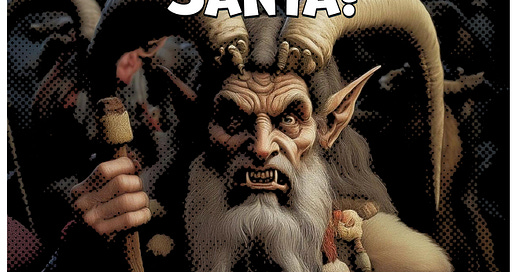
Best known for his generosity, every Dec. 25, Santa Claus flies around the world, delivering presents to children–spreading peace and goodwill. His origins are not as well-known. Ancient legends and tales reveal a darker and commercialized history.
From Saint Nicholas to Santa Claus
Since its launch in May 1886, people worldwide have enjoyed drinking Coca-Cola. The soft drink has been described as a refreshing fizzy blend of sweetness with hints of caramel and citrus.
In 2024, the Coca-Cola Company was ranked 94th on the Fortune 500 list of the largest companies in the United States.
During the 1920s, December traditionally was a slower sales season for the Coca-Cola Company. Magazines like the Saturday Evening Post ran advertisements promoting the company’s soft drink products to try and boost sales.
In 1931, the Coca-Cola Company hired advertising executives to find new ways of drawing in customers. The ad agency had an idea for a new campaign and commissioned an illustrator, Haddon Sundblom, to create a realistic and wholesome version of Santa Claus for their magazine advertising.
Sundblom’s original illustrations drew heavily on inspiration from Clement Clark Moore's 1822 poem A Visit from Saint Nicholas, commonly known as Twas the Night Before Christmas.
Moore's description of Saint Nicholas led to an image of a warm, friendly, pleasantly plump man dressed head to toe in red, trimmed with white fur.
From 1931 to 1964, advertising showed Santa delivering toys to children often pausing to read their letters and enjoying a bottle of Coca-Cola.
However, Moore and Coca-Cola’s version of Santa or Saint Nicholas dates to the fourth century in what is now modern-day Turkey.

One tale reveals Saint Nicholas’ generosity by secretly dropping gold coins down a chimney to help a struggling family.
Over time, Saint Nicholas’ reputation spread across Europe, and he became the patron saint of children.
In many parts of Europe, on December 6th, the feast of Saint Nicholas would be celebrated. The celebration involved gift-giving among family and friends. Children would leave empty shoes outside overnight, only to wake the following morning and discover treats in their shoes.
The dark and the light
The ancient Norse people in Norway, Sweden and Denmark living during the eighth century, a tradition known as the Yule festival marked the winter solstice.
They believed the god Odin— a long-bearded figure dressed in a cloak — flew through the night sky on his eight-legged horse, Sleipnir.
Odin would visit homes during the Yule festival to reward the good and punish the bad.
In some medieval legends, stories of Saint Nicholas veer into the macabre.
One tale has Saint Nicholas rescuing three young girls from being sold into sexual slavery by their father.
In the poem written by the medieval poet Wace, a family had fallen into poverty and needed money to buy food. The father had no choice but to sell his daughters. When Nicholas learned about the family’s predicament, he intervened. Over the next three nights, Nicholas tossed gold coins through the window into the family's house. On the third night, Nicholas had given the father enough money to save his daughters.
In Wace’s poem, the Miracle of the Boiled Infant, he describes Saint Nicholas’ miraculously resurrecting a child. In the poem, a mother rushing from her home to get to church accidentally leaves her baby in a tub of boiling water. Realizing what she has done, the mother races home, discovering her baby is unharmed and playing with bubbles in the tub.
Another tale describes the murder of a pilgrim visiting the shrine of Saint Nicholas. The pilgrim rents a room from the innkeeper only to later be dismembered and thrown into vats of salted meat by the same innkeeper. To the innkeeper’s surprise, the pilgrim woke up the next morning as if nothing had happened.
Even grislier, an English version of this story involves three students murdered by a butcher and his wife. Their bodies were ground up and made into pies for his shop. Saint Nicholas learns of the murders and brings the students back to life. The butcher and his wife were forced to repent for their sins.
According to Alpine folklore, Saint Nicholas’ has a dark companion, a demon-like creature who goes by the name of Krampus and punishes misbehaving children.
Krampus was known for kidnapping naughty children and hiding them in a sack. In some parts of Europe, they still celebrate Krampusnacht on December 5th. People dress up as Krampus and roam the streets, scaring kids and reminding everyone to behave.
The darker legends add depth to the story of Santa Claus, reminding us that his roots were in miracles and morality, not just gifts and cheer.
The legend of Santa Claus became softer and more commercialized over time, especially in the 19th century, thanks to Moore and Coca-Cola’s marketing campaigns. But that dark undercurrent is still there, lurking beneath the tinsel and lights.













Share this post